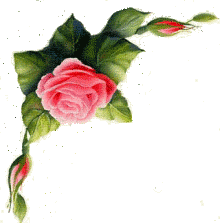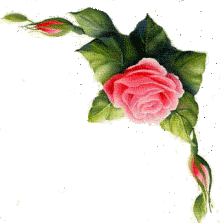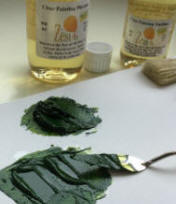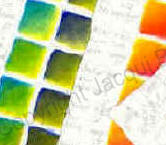 |
Tole and One-stroke Painting Techniques |
 |
 |
Tole and One-stroke Painting Techniques |
 |
 Oil Paint mixed with Zest-it Clear Painting Medium. |
One-stroke brush strokes for Tole Painting The methods described for the execution of the various brush strokes, are for use with Oil paint.
It is important to be comfortable as you work and to be in a position where the brush is pulled towards you at all times, this will mean that, you will sometimes need to turn the work, as you work.
|
 Colour Mixing Charts |
Use this link for more information on mixing colours. Use Zest-it Oil Paint Dilutant and Brush Cleaner to thin paint, clean your brushes and equipment. |
| Teardrop Stroke Round Flat
|
Using a Round brush (No.5) loaded with paint, touch the point of the brush to the surface, apply a small amount of pressure. This will spread the bristles and give a rounded top to the stroke. This is a continuous stroke:- Slowly pull the brush towards you whilst easing off with the pressure, as you near the end of the stroke, the bristles will go back to a point, and the point, makes the tail of the stroke. To achieve a good 'tail' continue the stroke after the brush has left the surface, don't just stop. Try it with the ¼" or 3/8" Flat brush, you need to finish on the chisel edge of the brush. Try making them with long and short tails. It's actually an upside down teardrop! |
| Comma Stroke Round Flat
|
|
| 'S' Stroke Round Flat
|
With the 'S' stroke, you need to start the stroke with the equivalent pressure you used in the above strokes to make a tail. Complete the stroke in one continuous movement. A light touch to start, slowly add pressure, maintain the pressure for the desired length, release the pressure, finish with a light touch and a short tail. For the Flat brush start on the chisel end of the brush, move slightly then pull towards you to form the length of the 'S', back onto the chisel end, finish off with the short tail. |
| 'C' or Crescent Stroke Flat Brush
|
In using the brush for the crescent stroke, you are forming an 'n' going up and a 'u' going down. Again it's a continuous movement.
For the 'n' crescent, stand the Flat brush on it's chisel end, move slightly up, put controlled pressure on the brush, form the 'n' shape, release controlled pressure as you finish the curve, at the same time bring the brush back onto it's chisel end. Again don't just stop, lift the brush off, but continue the movement. Try them with the Round brush. |
| Pivot Half Circle Stroke Flat Brush
|
Although the whole arm is used for the stroke, the brush also needs to be turned between the fingers. Stand the Flat brush on it's chisel end, in a horizontal position, decide which corner of the bristles is to be the pivot point.
Put a small amount of pressure on the brush, turn the brush between the fingers as you move your arm, forming a half circle. This time you need to stop to lift the brush to finish the stroke. Normally there would not be a gap in the centre, I put it in so you could see the brush stroke. |
Line Work Rigger Brush
|
Practice with the Rigger or liner brush until you feel in control. It's often best to have the paint thinned to a watery consistency, try writing your name and just doodling with the brush.
You need to be relaxed but in control. The paint needs to flow and so does you arm and wrist. Try swirls and figure of eights, long , loose comma strokes and flowing 'S's. |
Design and Artwork © Jacqui Blackman 1999